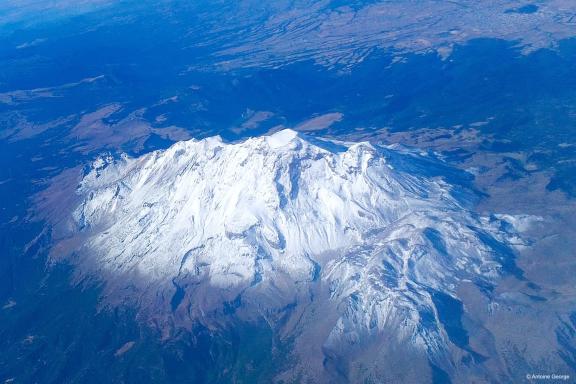The Seven Volcanic Summits Challenge aims to climb the highest volcano on each of the seven continents. First proposed in 1999 in the spirit of the Seven Summits, it was only achieved for the first time in 2011 by Mario Trimeri and Trina Popescu, when they reached the summit of Mount Sidley in Antarctica. More accessible than the Seven Summits challenge, in that it does not include either Everest or Denali in terms of altitude and physical commitment, it is still a little-known challenge that only a few dozen people have achieved to date. Expeditions Unlimited offers you this more accessible challenge. Only Mount Sidley in Antarctica requires a significant financial investment, either on its own or in combination with the South Pole and Mount Vinson.
The 7 volcanoes in the Seven Volcanic Summits Challenge
The list of the seven volcanoes, in descending order of altitude:
- South America (Chile) - Ojos del Salado (6,893 m)
- Africa (Tanzania) - Kilimanjaro (5,895 m)
- Asia (Iran) - Damavand (5,,671 m)
- Europe (Russia) - Elbrus (5,642 m)
- North America (Mexico) - Pico de Orizaba (5,636 m)
- Oceania (Papua New Guinea) - Mount Giluwe (4,368 m)
- Antarctica - Mount Sidley (4,285 m)
For four of them (Ojos del Salado, Pico de Orizaba, Damavand, Mount Sidley), the official altitude has not been determined, so we have used the highest altitude in each case. In Asia, certain sources indicate another volcano as being the highest: China, Tibet, the Kun Lun massif - Vulkan Ka-er-daxi (5,810 m), probably never climbed. History will tell whether it should be included in the list to replace Damavand.
Most of these volcanoes can be climbed in two to three weeks' holiday. Only Mount Giluwe in Papua New Guinea requires sophisticated logistics due to its geographical remoteness. Mount Sidley in Antarctica, on the other hand, requires special equipment because of the cold and a substantial budget because of the difficulty of accessing the icy continent.
To our knowledge, only thirty or so people to date have succeeded in this challenge.
Climb the Ojos del Salado at 6,893 meters, the highest volcano in South America
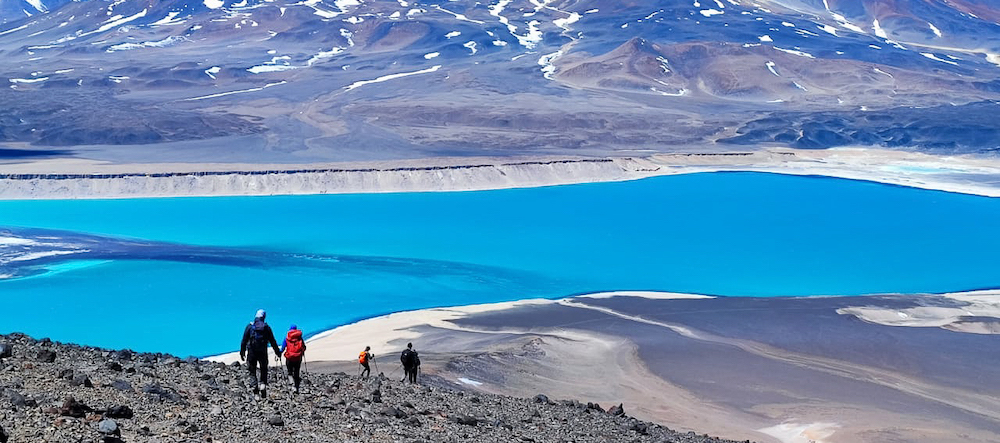
Ojos del Salado: the volcano of superlatives. The highest peak in Chile, the second highest in America (6,893 m), it is also the highest active volcano in the world. It is located in the southern part of the Atacama Desert, the vast arid expanse of northern Chile that is the size of Brittany, Normandy, Hauts-de-France and Île-de-France combined. A fifth of our territory. The tracks in the Atacama Desert are demanding. Covering it from north to south to discover its different facets (such as the Tatio geyser) means covering very long distances. We opted for a deliberately more limited choice, concentrating on the beautiful Salar de Maricunga region in the Parque Nacional Nevado Tres Cruces and the Laguna Verde, at the foot of the San Francisco (6,016 m) and Vicuña (6,077 m) volcanoes, before climbing the Ojos del Salado itself. This is a particularly challenging climb, given the altitude and the fact that the two-week format is a little short on acclimatisation time. If possible, it should be undertaken after acclimatising by climbing to a higher altitude in the weeks leading up to the climb, or even the ascent of Aconcagua, for which the expedition is timed to coincide with the season.
Climb Ojos del Salado volcano at 6,893 meters in Chile.
19 days | Many departures possible from November to April | Difficult level.
Climb Kilimanjaro at 5,895 meters, highest peak in Africa
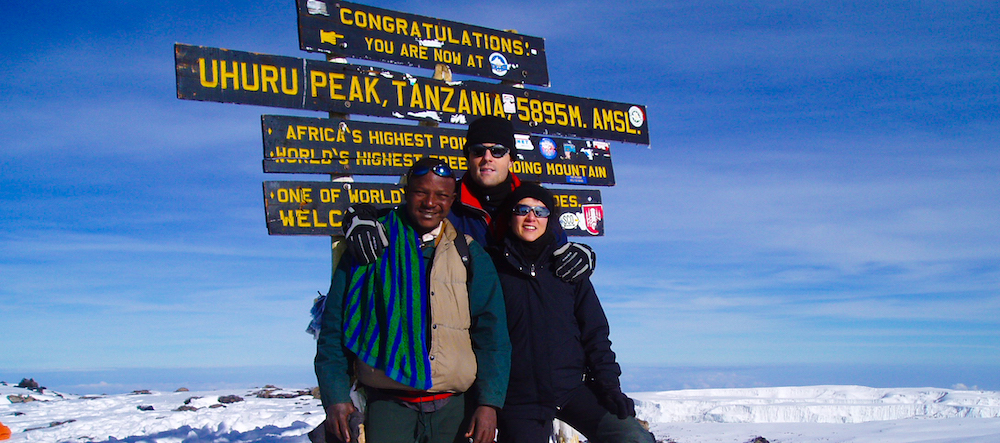
Kilimandjaro summit © Jérôme Brisebourg
We set off to climb Kilimanjaro at 5,895 meters, the highest peak in Africa and one of the Seven Summits and Seven Volcanic Summits. Climbing Kilimanjaro does not present any technical difficulties, but it does require a good acclimatisation if it is to be done successfully and safely. We recommend a seven-day ascent and favour the beautiful Machame route. We've been doing this climb for around twenty years, and our approach gives us a high success rate. If we are in good shape at the summit, we stay up there for a while to contemplate the rapidly diminishing summit glaciers on the roof of Africa. An ideal combination with safaris in the Serengeti and the Ngorongoro Crater, or climbs of the continent's second and third summits, Mount Kenya and Mount Stanley in the Rwenzori in Uganda.
Climb Kilimanjaro at 5,895 meters.
11 days | Numerous departures possible from January to June | Sports level.
Climb Damavand to 5,671 meters, Asia's highest volcano
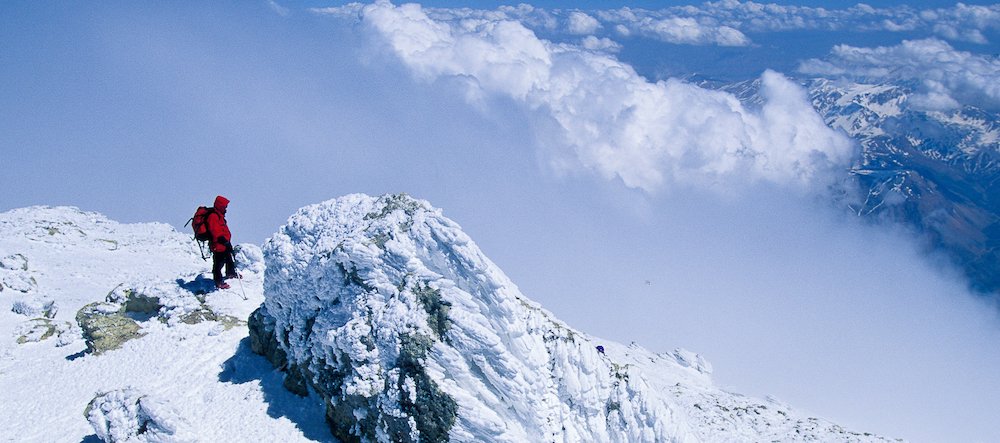
© Jean-Marc Porte
At 5,671 meters, Damavand, a legendary volcano, certainly deserves its nickname of ‘the roof of Iran’. We start with an easy ascent of Lashgarak (4256 m), a sumptuous lookout point, followed by Alam Kuh (4848 m), Iran's second-highest peak with contrasting faces, which we climb from its arid, barren south-facing slopes. Once we've climbed these two peaks, we turn our attention to the lord of the manor, Damavand, the highest volcano in Asia and, as such, one of the Seven Volcanic Summits. Sixteen routes can be followed along its slopes, some of them mountaineering-style, others simply trekking at altitude. We're taking the ‘normal route’ on the south side. The Iranian Mountain Federation has built a number of hostels at the foot of these different massifs, making access comfortable. Please note that the country is currently closed to tourism.
Climb Mount Damavand volcano at 5,610 meters in Iran.
14 days | Given the situation in Iran, our departures are currently frozen.
Climb Elbrus at 5642 meters in Russia, highest peak in Europe
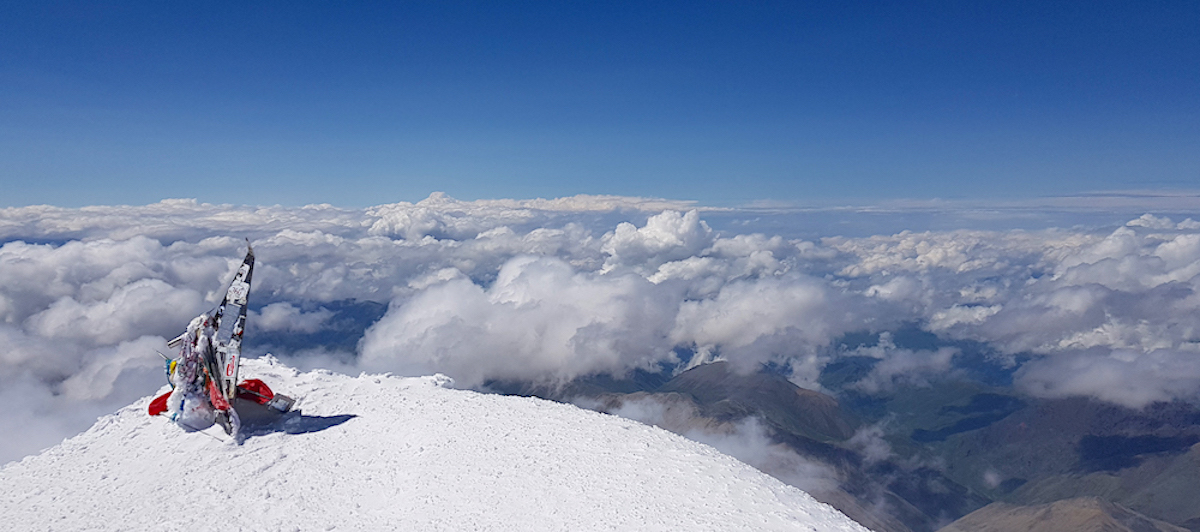
West summit of Elbrus © Pascal Denoël
For us French and Western Europeans, Mont Blanc has an aura linked to the fact that, on the one hand, Chamonix is easily accessible and, on the other, that the first ascent of Mont Blanc marked the beginning of the history of mountaineering. Mont Blanc may well be the highest peak in Western Europe, but Elbrus is the highest peak in Europe and, as such, one of the Seven Summits. We attempted the summit (5,642m) via the more beautiful and wilder northern slope, after adequate acclimatisation to enable us to tackle the difficult and lengthy summit assault in good conditions. It will take us almost twelve hours to reach the summit from the advanced base camp at 3,760 metres, with 1,800 metres of ascent and the same amount of descent. You need to be in excellent physical condition and have good stamina to attempt this climb. The weather is the decisive factor for success. Our programme is currently on stand-by due to the situation in Russia.
Elbrus at 5642 meters in Russia, highest peak in Europe.
12 days | Given the Russian-Ukrainian war, our departures are currently frozen for our European customers | Difficult level.
Climb the 5,636-meter peak of Orizaba, highest volcano in North America
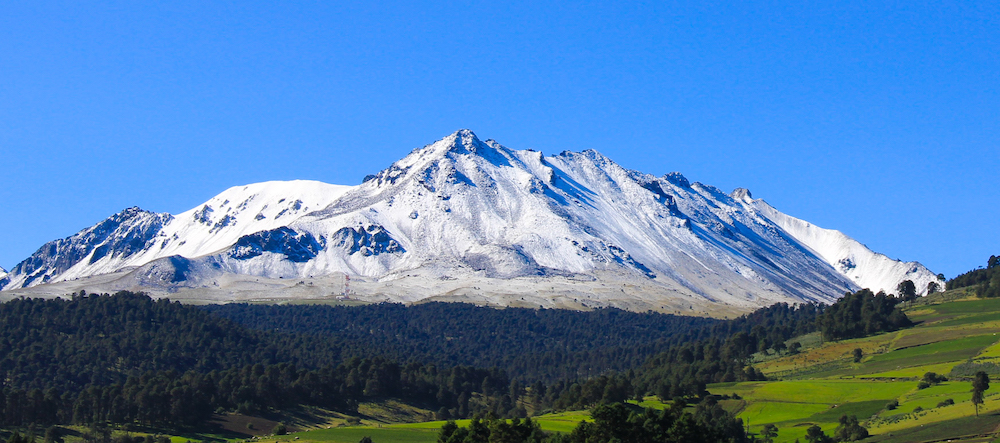
© Antoines Georges
At 5,636 meters, the Orizaba volcano is the highest volcano in North America and Mexico. Although it does not present any technical difficulties, you will need to be familiar with walking in crampons. Before setting off down its slopes, the ascent of three other volcanoes to the south of Mexico City will allow you to acclimatise properly. Firstly, the emblematic Nevado de Toluca (4680 m) with its beautiful crater lake. Next comes Iztaccihuatl, where we pass the five-thousand-metre mark. The Malinche (4,420 m) completes our training. And to cap it all off, Pico de Orizaba (5,636 m), known as Citlaltepetl in the Nahuatl language, dominates the Gulf of Mexico. To be combined with a visit to the magnificent Yucatan Peninsula and/or Chiapas.
Climb pico de Orizaba volcano at 5,636 meters in Mexico.
12 days | Departure in April | Sports level.
Climb Mount Giluwe to 4,368 meters, highest volcano in Oceania
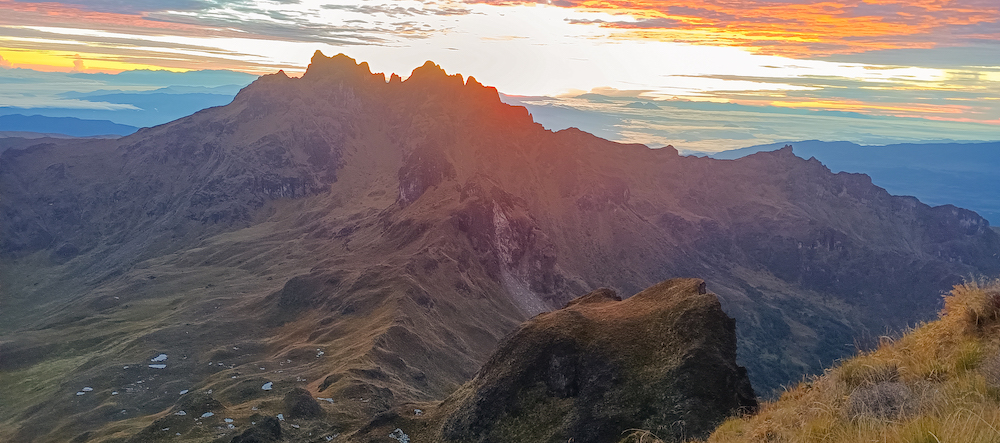
© Brice Liaigre
As part of the ascent of the seven highest volcanoes in the world, Mount Giluwe (4,368 m) is the perfect introduction to Papua New Guinea, the queen island of Oceania shared with Indonesian Papua, which is home to the Carzstens pyramid, the highest peak in Oceania. After reaching Mount Giluwe, we suggest you climb Mount Wilhem, the highest point on this part of the island (4,509 m). More difficult and challenging than Mount Giluwe. We are proposing an original three-day approach, offering splendid high-altitude landscapes, forests of tree ferns and isolated bivouacs. A fabulous programme, to be combined if possible with the discovery of the Upper Sepik and the Highlands.
Climb Mount Giluwe volcano at 4,368 meters in Papua-New-Guinea.
16 days | Departures in November and May | Difficult level.
Climb Mount Sidley at 4,285 meters, higher volcano in Antarctica
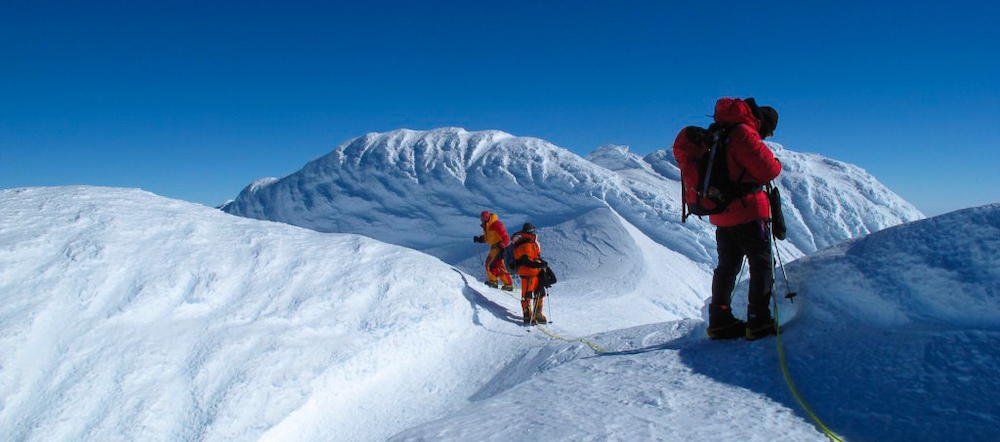
Be one of the few to have climbed Mount Sidley to 4,285 meters, the highest volcano on the Antarctic continent and one of the seven highest volcanoes on the planet. Higher than the more active Mount Erebus, located on the cap, this majestic peak comprises a 5-kilometer-wide caldera and a steep-sided amphitheatre created by an explosive eruption 4.7 million years ago. Slopes of blue ice guard the high mountain and fantastic snow mushrooms grow along the upper ridge, leading to the summit. Mount Sidley was first climbed in 1990 by New Zealander Bill Atkinson and had its second ascent in 2010 by a team guided by ALE. This team established a new route on the east ridge and traversed the three summits. There are still many routes to be opened up on Mount Sidley, one of the most remote peaks on the planet. To optimise your expedition ecologically and economically, a combination is possible with the last degree at the South Pole and the ascent of Mount Vinson. Please contact us for details, and make sure you book early as only one combination is possible per year.
Climb Mount Sidley volcano at 4,285 meters.
18 days | Departure in January | Sports level.
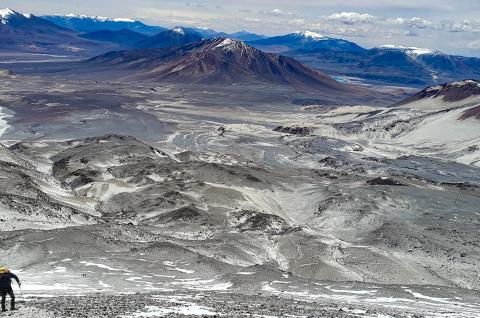
Climb Ojos del Salado volcano at 6893 meters in Chile
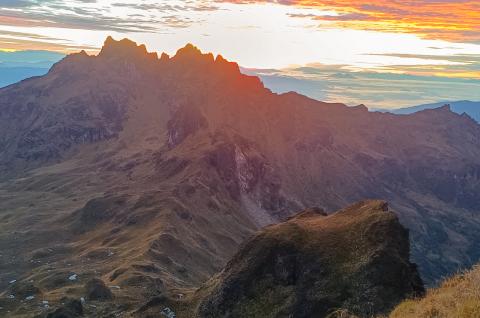
Climb Mount Giluwe volcano at 4368 meters in Papua New Guinea
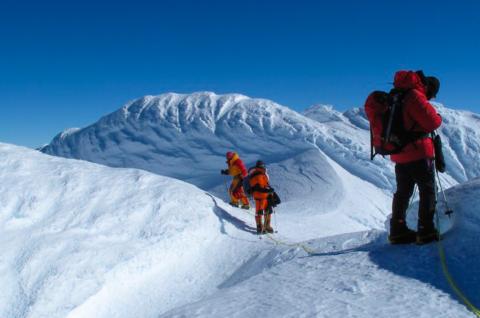

 Expeditions Unlimited blog
Expeditions Unlimited blog